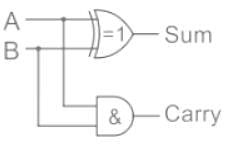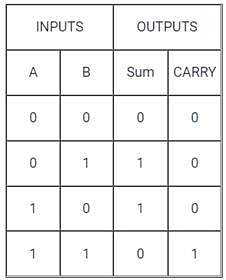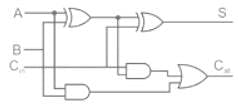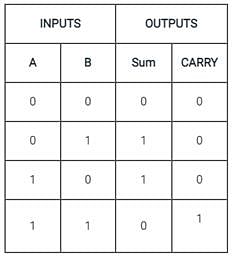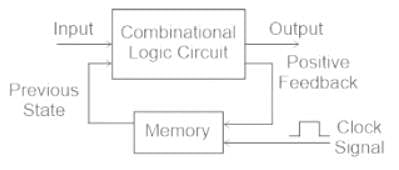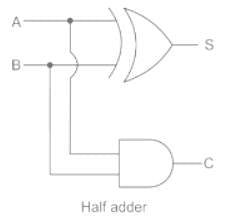Electrical Engineering (EE) Exam > Electrical Engineering (EE) Tests > Test: Adders - 2 - Electrical Engineering (EE) MCQ
Test: Adders - 2 - Electrical Engineering (EE) MCQ
Test Description
10 Questions MCQ Test - Test: Adders - 2
Test: Adders - 2 for Electrical Engineering (EE) 2024 is part of Electrical Engineering (EE) preparation. The Test: Adders - 2 questions and answers have been prepared
according to the Electrical Engineering (EE) exam syllabus.The Test: Adders - 2 MCQs are made for Electrical Engineering (EE) 2024 Exam.
Find important definitions, questions, notes, meanings, examples, exercises, MCQs and online tests for Test: Adders - 2 below.
Solutions of Test: Adders - 2 questions in English are available as part of our course for Electrical Engineering (EE) & Test: Adders - 2 solutions in
Hindi for Electrical Engineering (EE) course.
Download more important topics, notes, lectures and mock test series for Electrical Engineering (EE) Exam by signing up for free. Attempt Test: Adders - 2 | 10 questions in 30 minutes | Mock test for Electrical Engineering (EE) preparation | Free important questions MCQ to study for Electrical Engineering (EE) Exam | Download free PDF with solutions
Detailed Solution for Test: Adders - 2 - Question 1
Test: Adders - 2 - Question 2
A ________ arithmetic circuit adds two binary digits, giving a sum bit and a carry bit.
Detailed Solution for Test: Adders - 2 - Question 2
| 1 Crore+ students have signed up on EduRev. Have you? Download the App |
Detailed Solution for Test: Adders - 2 - Question 3
Detailed Solution for Test: Adders - 2 - Question 4
Test: Adders - 2 - Question 5
Half adder is a logic circuit that accepts ________ single bit inputs.
Detailed Solution for Test: Adders - 2 - Question 5
Detailed Solution for Test: Adders - 2 - Question 6
Detailed Solution for Test: Adders - 2 - Question 7
Detailed Solution for Test: Adders - 2 - Question 8
Detailed Solution for Test: Adders - 2 - Question 9
Detailed Solution for Test: Adders - 2 - Question 10
Information about Test: Adders - 2 Page
In this test you can find the Exam questions for Test: Adders - 2 solved & explained in the simplest way possible.
Besides giving Questions and answers for Test: Adders - 2, EduRev gives you an ample number of Online tests for practice
Download as PDF


